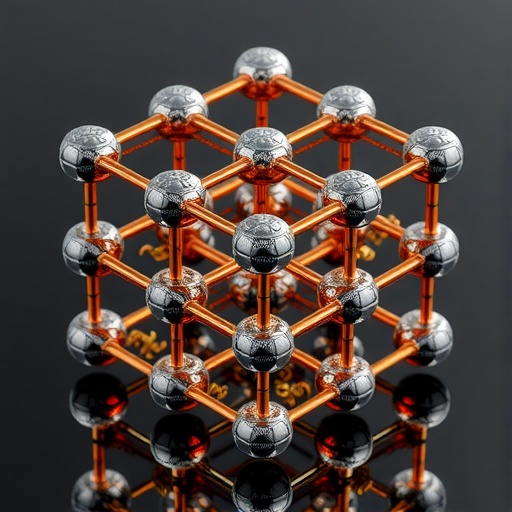In a groundbreaking study, researchers have unveiled an innovative approach to battery technology by developing highly efficient and stable rocking-chair aqueous manganese-ion batteries utilizing three-dimensional (3D) ordered macro-microporous titanium nitride (TiN) and carbon architectures. The changing dynamics of energy storage systems are driven by the necessity for sustainability and efficiency, prompting scientists to explore novel materials and designs that can meet tomorrow’s demands.
The crux of the research lies in overcoming limitations posed by traditional battery technologies, primarily lithium-ion batteries, which face significant challenges such as high costs, safety concerns, and environmental impact. Manganese-ion batteries, with their significant advantages, such as abundant raw materials, lower toxicity, and a favorable electrochemical profile, promise to revolutionize the energy storage sector. However, the critical challenge has been to enhance their electrochemical performance while ensuring longevity and stability.
At the core of this innovation is the rational design of 3D ordered macro-microporous structures composed of TiN and carbon. The manipulation of materials at the nanoscale was pivotal in achieving a robust framework that accommodates high ionic conductivity and superior charge storage capacity. The spatial configuration of macro-particles creates a conducive environment for faster ion transport, while the microporous structures ensure substantial surface area for charge storage, enabling higher energy densities.
.adsslot_2xi6OnXNca{width:728px !important;height:90px !important;}
@media(max-width:1199px){ .adsslot_2xi6OnXNca{width:468px !important;height:60px !important;}
}
@media(max-width:767px){ .adsslot_2xi6OnXNca{width:320px !important;height:50px !important;}
}
ADVERTISEMENT
The researchers meticulously synthesized the TiN/carbon composite architecture to produce a hierarchical porous structure. This design approach not only fosters efficient ion mobility during charge and discharge cycles but also mitigates the issues related to volume expansion, one of the critical factors leading to battery degradation. The result is a composite that exhibits remarkable structural stability, which is crucial in sustaining cycling performance over extended periods.
One of the key outcomes of this research is the ability to maintain electrochemical performance under various environmental conditions. In practical applications, battery performance can be significantly influenced by temperature and humidity. The robustness of the TiN/carbon composite architecture showcased resilience and stability, allowing for consistent performance, a crucial factor for real-world applications including portable electronics and electric vehicles.
Researchers also explored the fundamental mechanisms underlying the charge storage process. They discovered that the electron transfer dynamics between the TiN and carbon phases play a pivotal role in enhancing the overall battery performance. This relationship underscores the importance of optimizing interfacial interactions in composite materials to facilitate more efficient energy conversion and storage processes.
Furthermore, the study emphasizes the importance of sustainability in the development of next-generation batteries. With a keen focus on reducing the ecological footprint, the raw materials selected for the synthesis of TiN and carbon were sourced from abundant and less toxic resources. This strategic choice aligns with the growing demand for environmentally friendly technologies in energy storage applications.
In addition to energy storage, the implications of the research extend to various fields within material science and engineering. The insights gained from the structural and electrochemical behavior of TiN/carbon architectures may guide future investigations into other potential applications, including catalysts and sensors. The adaptability of the proposed framework demonstrates its potential for innovative solutions across diverse technological sectors.
This study heralds a new era in battery technology, bridging the gap between high-performance energy storage and sustainable design. Researchers have underscored the criticality of interdisciplinary approaches in achieving technological advancements, highlighting the synergies between material science, electrochemistry, and engineering principles.
In conclusion, the advent of 3D ordered macro-microporous TiN/carbon architectures marks a significant step towards real-world applications of manganese-ion batteries. The combination of enhanced electrochemical performance, structural stability, and sustainability positions this research as a cornerstone for future developments in the green energy landscape. The ongoing evolution of energy storage technologies promises to redefine our approach to energy use and conservation, paving the way for a more sustainable future.
The advent of new battery architectures that are efficient, stable, and environmentally friendly is a necessity, and this research provides a promising path forward. With compelling results and potential implications for various fields, the development of TiN/carbon architectures could reshape the energy storage landscape for generations to come.
Subject of Research: Development of 3D ordered macro-microporous TiN/carbon architectures for manganese-ion batteries.
Article Title: Rational design of 3D ordered macro-microporous TiN/carbon architectures for high-energy and stable rocking-chair aqueous Mn-ion batteries.
Article References:
Zhang, S., Zhou, Y., Chen, X. et al. Rational design of 3D ordered macro-microporous TiN/carbon architectures for high-energy and stable rocking-chair aqueous Mn-ion batteries.
Ionics (2025). https://doi.org/10.1007/s11581-025-06574-w
Image Credits: AI Generated
DOI: https://doi.org/10.1007/s11581-025-06574-w
Keywords: manganese-ion batteries, TiN, carbon architectures, energy storage, electrochemical performance, sustainability.
Tags: 3D ordered macro-microporous structuresadvantages of manganese-ion batteriescarbon architectures for energy storageelectrochemical performance enhancementfuture of energy storage systemshigh ionic conductivity solutionsmanganese-ion battery technologynanoscale material manipulationovercoming lithium-ion limitationsrocking-chair aqueous batteriessustainable battery materialstitanium nitride in batteries





